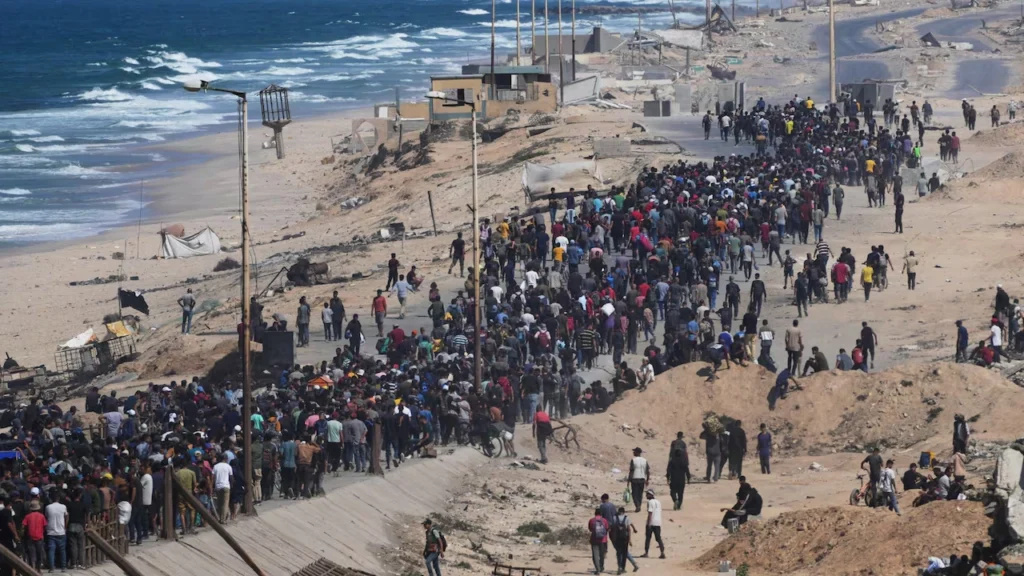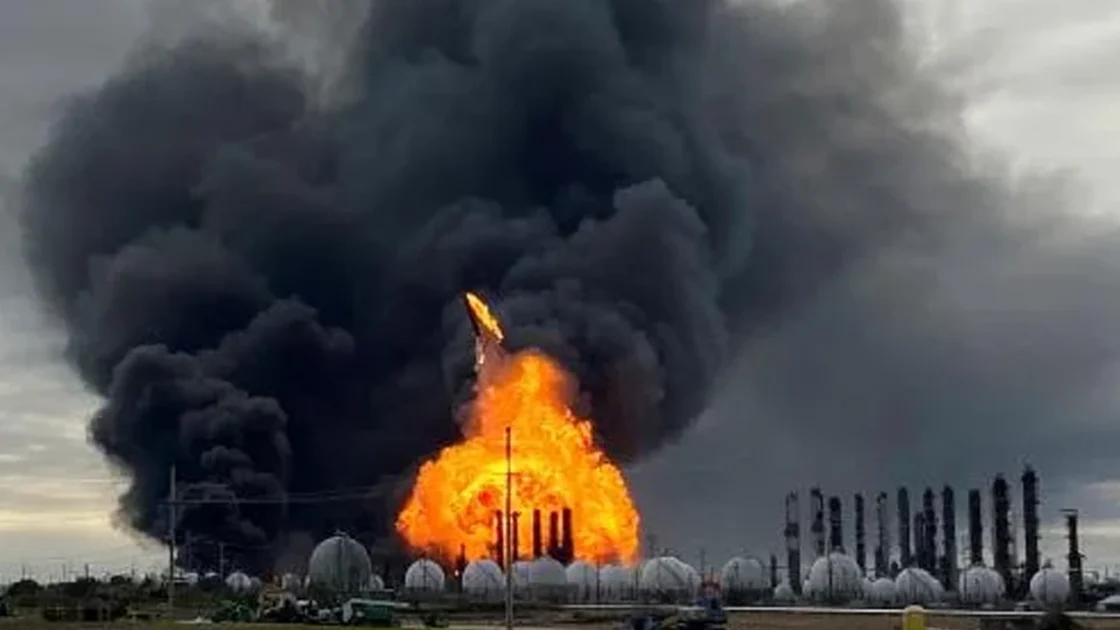- AFP
- 4 Hours ago
Thousands flock home after Gaza truce begins
-
- Reuters
- 2 Hours ago

JERUSALEM/CAIRO: Thousands of displaced Palestinians began returning to what remains of their homes in Gaza on Friday, hours after a ceasefire took effect and Israeli forces started withdrawing under an agreement to end the two-year war.
Long columns of men, women and children were seen walking north along Gaza’s coastal road toward Gaza City — once the enclave’s largest urban centre — now left in ruins after weeks of heavy Israeli bombardment.
“Thank God my house is still standing,” said Ismail Zayda, 40, in the Sheikh Radwan district. “But everything around it is gone — my neighbours’ houses are destroyed, whole districts are wiped out.”
In southern Gaza, residents carefully made their way through the rubble of Khan Younis, the strip’s second-largest city, flattened earlier this year by Israeli forces. Many carried salvaged belongings, scraps of wood or tin, and pushed bicycles loaded with whatever could be recovered.
“We went back to our area — it was exterminated,” said Ahmed al-Brim, who was seen carrying firewood. “We couldn’t even collect our clothes or furniture. There’s nothing left.”
Ceasefire begins amid cautious hope
The Israeli military confirmed that the ceasefire came into effect at noon local time. Under the first phase of the peace plan proposed by U.S. President Donald Trump, Israeli troops have 24 hours to withdraw from urban areas, though they will continue to hold more than half of Gaza.
Israel’s Prime Minister Benjamin Netanyahu said forces would remain in Gaza to ensure that Hamas is fully disarmed. “If this is achieved the easy way, that will be good — otherwise, it will be achieved the hard way,” he said in a televised address.
The Trump administration is expected to host a signing ceremony in Egypt, with reports indicating that world leaders will gather for a “summit on Gaza” during his visit to the region. The plan also calls for the creation of an international “Board of Peace,” to be led by Trump and include former British Prime Minister Tony Blair, to oversee Gaza’s post-war administration.
Return to the rubble
As Israeli checkpoints began opening, the trickle of people returning home soon turned into a flood. “There are no houses anymore,” said Mahdi Saqla, 40, walking north with his family. “But even to stand over the rubble of our homes gives us hope. We’ve suffered in displacement for two years.”
Under the deal, Hamas has 72 hours to release the 20 surviving Israeli hostages it still holds. In exchange, Israel will free 250 Palestinians serving long-term sentences and 1,700 detainees captured during the war. Hundreds of aid trucks are also expected to enter Gaza daily, carrying food and medical supplies.
Israeli army spokesperson Brigadier General Effie Defrin urged civilians to stay clear of areas still under military control. “Keep to the agreement and ensure your safety,” he said.
‘Guarantees that the war is over’
The ceasefire brought rare scenes of relief in both Israel and Gaza after two years of relentless violence that killed more than 67,000 Palestinians. Hamas exiled leader Khalil al-Hayya said he had received assurances from U.S. and regional mediators that the war was “truly over.”
The conflict began after Hamas fighters attacked Israeli communities and a music festival on October 7, 2023, killing 1,200 people and taking 251 hostages. Of those, 20 are believed to be alive, 26 dead, and the fate of two remains unknown.
Challenges ahead
Despite the truce, major hurdles remain. Key points of Trump’s 20-step plan — including Gaza’s post-war governance and Hamas’s future role — have yet to be agreed upon.
The Hamas-run interior ministry said its security forces would redeploy in areas vacated by Israeli troops, though it was unclear whether armed fighters would return to the streets — a move Israel could interpret as a violation of the deal.





